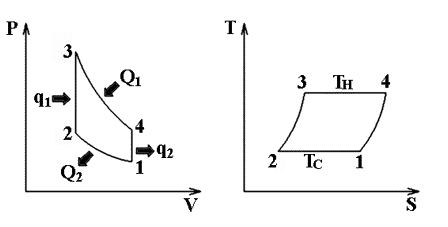Abstract - Brian Adcock, MSc, Energy Management
Augmentation of Stirling Cycle Simulation
Brian Adcock – 1999
An attempt has been made to develop a double stage model of an Oxford Stirling cycle cryo-cooler from a single stage progenitor utilising Sun and Carrington discretization scheme. This scheme takes account of the effects of oscillating flow on heat transfer and fluid flow throughout all the present control volumes. The model allows an in-depth examination of heat transfer and fluid flow processes within all the components and control volumes. This is in contrast to other models of Atrey et al, for example, which perform a more global examination based only on the significant components.
Initial evaluations of the double stage model showed that an assumption made for development purposes was incorrect. This was corrected and variations were made of the regenerator/displacer physical configurations in an attempt to obtain better performances from both models. Values of refrigeration and co-efficient of performance greater than those of the reference models (single and double) were obtained. Further optimization, perhaps using a multiparameter response surface methodology may determine global maxima of performance. This was not performed because the maximum obtained refrigeration of the double stage model was much lower than expected in comparison with the single stage model. Also a later correction was made to the displacer work for the double stage model which resulted in the value of the cyclic equilibrium energy balance EEB falling outside the convergent criteria.

Condition of the working fluid in an ideal Stirling cycle.
LHS:pressure-volume diagram, RHS: temperature-entropy diagram
Thus the development of the double stage model has not been successful, however for many parameters the code exhibits reasonable time dependent behavior. The sources of these problems have been discussed and recommendations made about corrective courses of action. These include: backtracking the double stage model development to determine when the EEB instability began, searching for coding errors, calculating shell wall temperatures with the cycle time steps instead of a linear profile assumption, disabling empirical data correction coefficients, and trailing alternative formulas for the shuttle heat transfer and longitudinal conduction losses.

